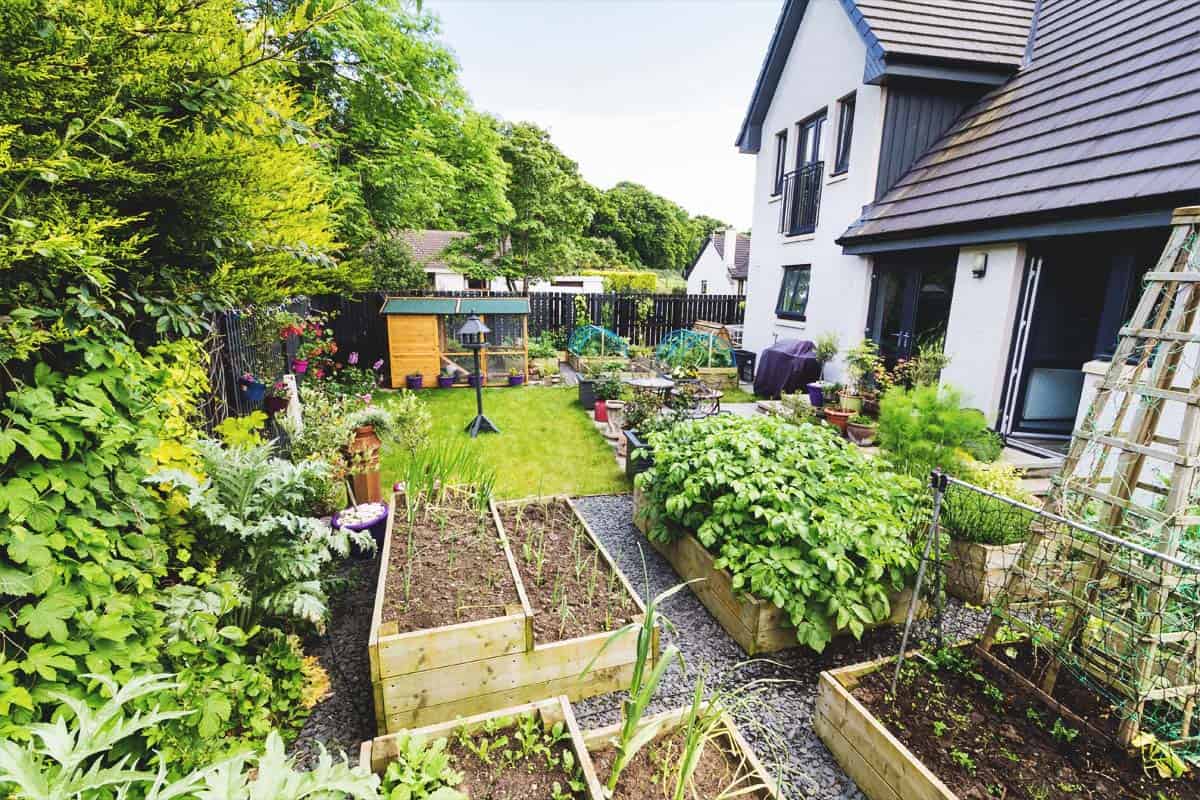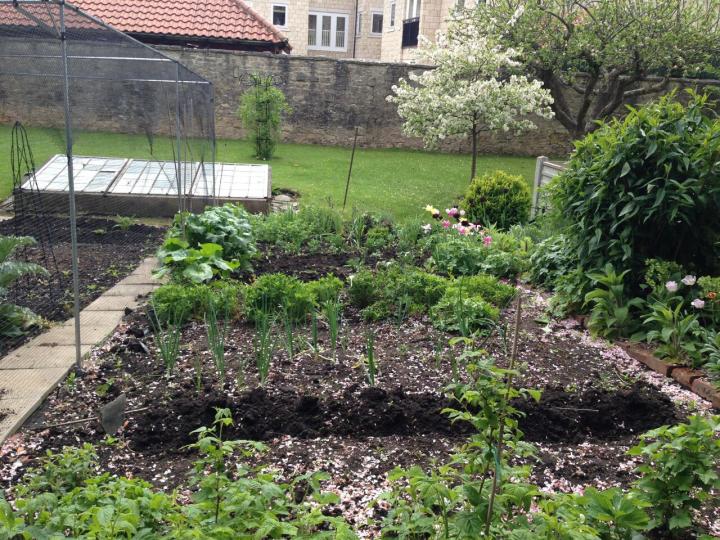The Cost-Saving Benefits of Homestead Gardening
The Cost-Saving Benefits of Homestead Gardening
Blog Article
Discover Crucial Tips for Successful Gardening Techniques and Practices
Horticulture, commonly seen as an easy leisure activity, incorporates a variety of techniques and methods that can dramatically influence the outcome of your initiatives. By focusing on important aspects such as soil health and wellness, reliable sprinkling approaches, and appropriate plant selection, gardeners can produce a growing ecosystem that supports vibrant growth. Understanding the nuances of pest management and seasonal upkeep can better enhance efficiency. Numerous enthusiasts overlook critical information that can make or damage their gardening success-- exploring these forgot facets may disclose the key to growing a growing garden.
Recognizing Soil Wellness
Soil wellness is a fundamental aspect of effective gardening, as it straight influences plant development, nutrient accessibility, and ecosystem balance. Healthy and balanced dirt is characterized by an abundant biodiversity of microorganisms, raw material, and a balanced pH level, which with each other create an atmosphere for plant advancement.
To understand soil wellness, one must consider its physical, chemical, and biological residential properties. The texture and structure of dirt influence its capacity to retain wetness and nutrients, while the chemical structure determines the accessibility of necessary elements like phosphorus, nitrogen, and potassium. Normal dirt testing is critical to assess these elements, enabling garden enthusiasts to make enlightened choices regarding amendments and fertilizers.
In addition, advertising organic task within the dirt is vital for maintaining its health. Practices such as composting, crop rotation, and the usage of cover plants can improve microbial diversity, enhance nutrient cycling, and minimize dirt disintegration. By focusing on soil health and wellness, gardeners not only enhance plant growth but also add to a sustainable community, guaranteeing that their horticulture techniques are environmentally liable and resilient gradually.
Efficient Watering Techniques
Ensuring that plants obtain the ideal quantity of water is important for their health and wellness and growth, specifically when paired with a strong foundation of dirt wellness (Homestead Gardening). Efficient watering strategies can substantially impact plant vigor, lowering water waste and promoting optimum advancement
One fundamental technique is deep watering, which encourages origins to grow much deeper into the dirt, enhancing dry spell resistance. This technique normally involves sprinkling less often but in bigger amounts, enabling dampness to penetrate the origin zone completely. Timing is also critical; early morning is the excellent time to water, as it reduces dissipation and allows foliage to completely dry during the day, decreasing condition risks.
In addition, employing mulch can aid retain soil dampness and regulate temperature, additional assisting reliable sprinkling techniques. Utilizing a drip irrigation system can likewise give targeted moisture directly to the origins, making certain that water reaches where it's most needed while saving sources.
Keeping track of rains and dirt dampness degrees can guide modifications in your watering routine, making certain plants obtain consistent hydration without over-saturation. By embracing these reliable sprinkling strategies, garden enthusiasts can foster a flourishing atmosphere for their plants to thrive.
Plant Choice and Positioning
Just how can the appropriate plant option and strategic placement transform a garden right into a flourishing ecosystem? The synergy between plant varieties and their positioning is important for creating a vivid yard. When picking plants, take into consideration factors such as environment, dirt kind, and sunshine direct exposure. Indigenous types are commonly the very best selection as they are adjusted to regional conditions and require much less maintenance.
Strategic positioning entails setting up plants according to their growth habits and demands. Taller plants need to be placed at the back of borders to prevent shading much right here shorter plants. Furthermore, grouping plants with comparable water and light needs can boost their growth and reduce competitors for resources.
Including a diversity of plants not just includes aesthetic allure however also advertises biodiversity, drawing in advantageous pests and pollinators. Think about the seasonal changes in your yard; select a mix of evergreens, perennials, and annuals to guarantee year-round passion.
Finally, remember to examine the mature dimension of plants prior to planting to stay clear of overcrowding and make sure adequate air go to the website flow. Thoughtful plant selection and calculated positioning produce an unified environment, enabling your yard to flourish while lessening obstacles.
Insect and Illness Management
Efficient parasite and disease administration is essential for preserving a healthy and balanced yard community - Homestead Gardening. A positive strategy, combining cultural, organic, and chemical strategies, can considerably minimize the influence of pests and diseases on your plants

Organic controls, such as presenting helpful pests like ladybugs or predacious termites, can maintain parasite populaces in check without hurting the atmosphere. In addition, maintaining plant wellness through correct watering, fertilizing, and trimming will reinforce their resilience versus diseases.
When treatment is essential, choose targeted chemical treatments, guaranteeing to follow application guidelines to decrease damage to non-target organisms. Always prioritize sustainable techniques, as they promote lasting garden wellness and environmental balance. By integrating these methods, gardeners can effectively handle conditions and insects, making certain prospering plants and a productive yard.

Seasonal Upkeep Practices
In springtime, focus on soil preparation by screening pH degrees and adding needed amendments. Frequently inspect emerging plants for diseases and bugs.
As summer strategies, guarantee ample irrigation while monitoring for indications of stress or illness. Trim back overgrown plants to urge air circulation and minimize moisture around foliage. This method not just enhances plant health and wellness but likewise advertises flowering and fruiting.
With the arrival of autumn, it's time to plan for winter season. Tidy up dropped leaves and debris to avoid parasite infestations, and think about growing cover plants to enrich dirt health and wellness. This period is additionally perfect for splitting perennials and growing spring-flowering light bulbs.
Conclusion
Successful gardening joints on the assimilation of audio practices in dirt wellness, watering, plant option, bug administration, and seasonal maintenance. By prioritizing dirt screening and microbial diversity, employing reliable sprinkling techniques, and selecting appropriate plants, gardeners can develop prospering environments.
By prioritizing essential components such as dirt health, effective sprinkling techniques, and appropriate plant option, gardeners can create a growing ecological community that supports vibrant development. By prioritizing dirt health and wellness, gardeners not just optimize plant development however additionally add to a lasting community, ensuring that over at this website their horticulture methods are eco accountable and resilient over time.
Taller plants should be placed at the back of boundaries to stop shielding shorter plants. Tidy up fallen leaves and particles to prevent bug infestations, and think about planting cover crops to improve soil health and wellness.Effective gardening hinges on the combination of sound methods in dirt health, watering, plant choice, parasite management, and seasonal upkeep.
Report this page